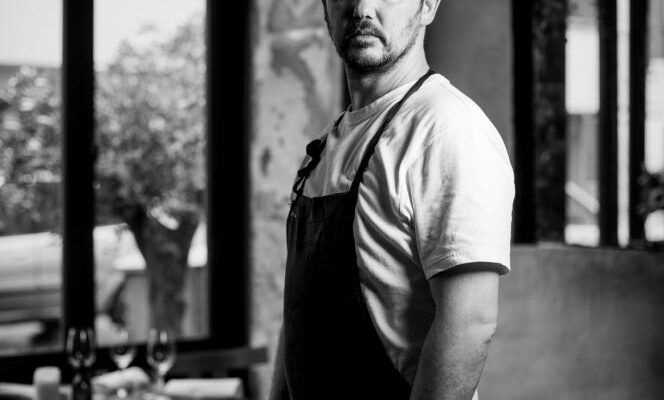Before becoming a cook, I studied graphic design at Penninghen, a school of artistic direction and interior design, rue du Dragon, in Paris, in the 6e arrondissement. At the time, I regularly went to eat at Cosi, rue de Seine, one of the first artisanal sandwich shops in the capital, which was (and still is) a haunt for gourmet students. I really liked their copiously garnished sandwiches, in focaccias cooked on site in a wood-fired oven, the fresh cooked vegetables, the good sauces, like the Perfide Albion (roast beef, candied tomatoes, onion compote, fresh salad, herbs).
The sandwich is something that always works well, because it is fatty, salty, there is bread that soaks up sauce or juice, tastes and textures that complement each other. It reminds me of this popular expression, when you eat a good dish: “That … in a sandwich!” Which means that what is good will always be good (even better) between two slices of bread.
“I really like the idea of taking a dish from one of my restaurants, and simplifying it by stuffing it between two slices of bread. »Bertrand Grébaut
All the cultures of the world have their “filled bread”, with different types of “containers” (bread, pancake or pancake) and contents: ham and butter in Paris or pan bagnat in Nice, BLT (bacon-lettuce-tomato) American, banh mi in Vietnam, tacos in Mexico, arepas in Colombia and Venezuela, kebabs in the Middle East… Through these various kinds of bread, fillings and combinations of flavors, sandwiches speak of identity and history of civilizations.
That said, for me, the sandwich should be kept simple, without too many ingredients or complexity. Most of the time, we improvise with what we have on hand. It is a complete dish that can be made quickly and eaten on the go, with one hand, without a plate or cutlery. It’s a different way of eating. I really like the idea of taking a dish from one of my restaurants, and simplifying it by stuffing it between two slices of bread (or focaccia, in this case, like at Cosi).
For this sandwich, I chose the ingredients from a plate we recently served at Clamato: fresh and smoked haddock, soft-boiled egg, herb mayonnaise, fermented white asparagus, sucrine, leaves and aromatic herbs, salicornia. I simplified the picture a bit, replaced the asparagus with cucumbers and left the samphire aside. It’s delicious like that.
You have 24.81% of this article to read. The rest is for subscribers only.
